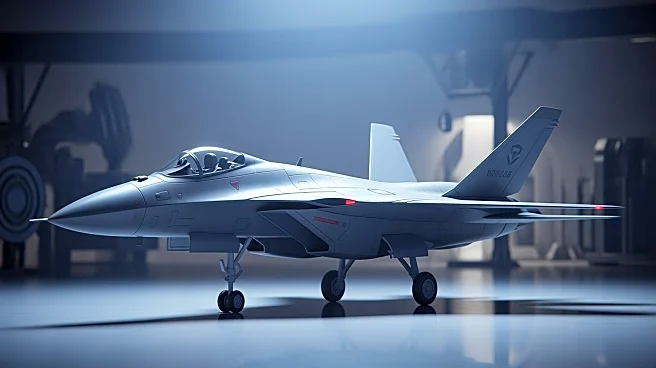What's Happening?
Lockheed Martin is on track to deliver up to 190 F-35 fighter jets in 2025, driven by strong U.S. and international interest. During a third-quarter earnings call, CEO Jim Taiclet highlighted the delivery of 46 aircraft in the third quarter and a backlog
of 265 jets. The company has seen increased demand from international allies, including Belgium and Denmark, who plan to expand their F-35 fleets. Lockheed Martin's aeronautics sales have increased by 12% compared to last year, bolstered by a $15 billion air vehicle sustainment contract with the Joint Program Office.
Why It's Important?
The growth in F-35 deliveries reflects the aircraft's critical role in maintaining air superiority for the U.S. and its allies. The program's expansion supports Lockheed Martin's financial performance and strengthens its position in the global defense market. The sustained demand for the F-35 underscores its unmatched capabilities and the strategic importance of maintaining a robust defense infrastructure. The program's success also highlights the collaboration between Lockheed Martin, the U.S. government, and international partners in advancing military technology.
What's Next?
Lockheed Martin anticipates continued growth in the F-35 program, driven by international demand and technological advancements such as the Block 4 upgrades. The company is optimistic about overcoming challenges related to tech integrations, thanks to strong collaboration with government and suppliers. The focus on sustainment and modernization will likely drive future program growth, ensuring the F-35 remains a key component of military strategy. Lockheed Martin aims to maintain a delivery rate of 156 aircraft per year, supported by strong advocacy from lawmakers and the administration.
Beyond the Headlines
The expansion of the F-35 program may have broader implications for global defense strategies, influencing military procurement decisions and international alliances. The program's success highlights the importance of technological innovation in maintaining military superiority and may drive further investments in defense research and development. Additionally, the collaboration between Lockheed Martin and its partners may serve as a model for other defense programs seeking to enhance efficiency and reduce barriers to innovation.















